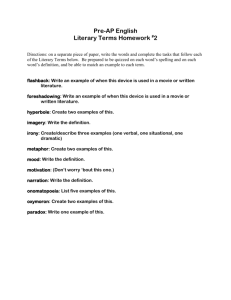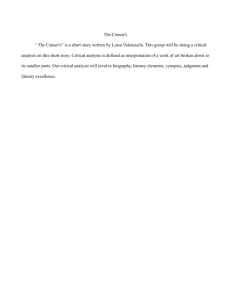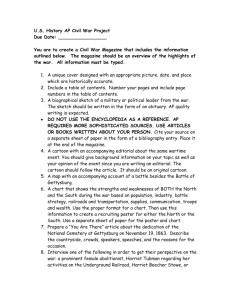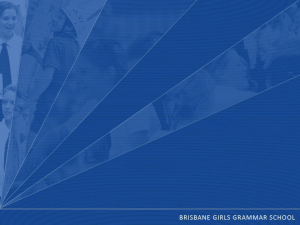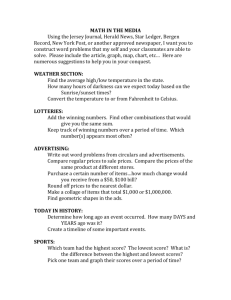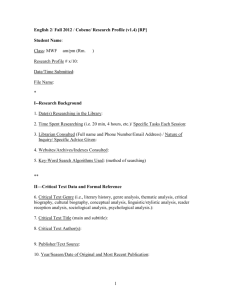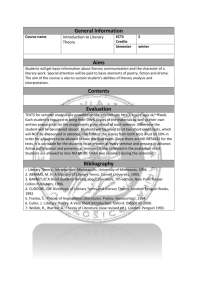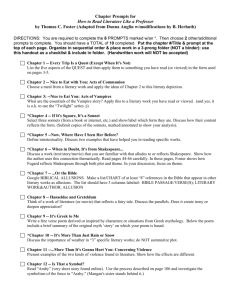The Historical and Biographical Approach
advertisement
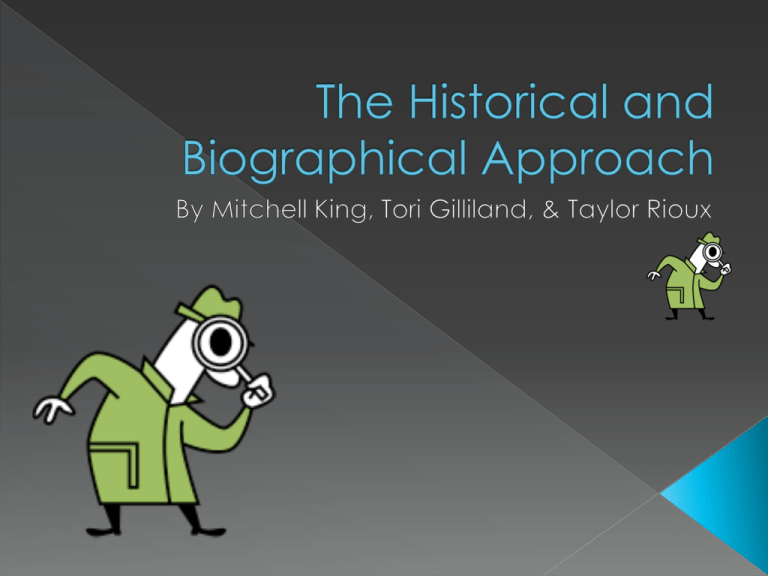
seeks to understand a literary work by investigating the social, cultural, and intellectual context that produced it: a context that necessarily includes the artist’s biography and milieu. A key goal for historical critics is to understand the effect of a literary work upon its original readers. When, where, and why? literature is written by actual people and understanding an author’s life can help readers more thoroughly comprehend the work focuses on explicating the literary work by using the insight provided by knowledge of the author’s life What time period was the piece written in? How does that time period influence the work? What cultural impact does the time period have on the piece? What is the author’s background? Does the author’s personal history influence the piece? If so, how? Are any significant historical events described in the work? Was there a political and or religious message in the work? Does the author’s political or religious bias influence the piece? Time period clarifies purpose A window into a different time Insight into author’s personal life Taste of previous culture’s language and society Comparisons between past and present Author’s political bias Religious and political influences from society Content may be inaccurate Censorship Limits reader’s creativity Accuracy of timeline English ClassA Thousand Splendid Suns- Historical Context (Turmoil in Afghanistan in the late 20th Century). By Khaled Hosseini Tweak – Biography of a struggling drug addict. By Nic Sheff History ClassThe Jungle- Historical Context (Chicago Meatpacking plants in 1906) By Upton Sinclair. Read a 4 page section of the book. “The Gettysburg Address” by Abraham Lincoln- Lincoln’s speech delivered to the nation after the bloody battle of Gettysburg. Reflected the nation’s chaos at the time, and was short and concise, just over two minutes. (1863) MathThe Pythagorean Theorem- In every math book that deals with this type of arithmetic there is a short piece on the origination of the method. Pythagoras of Samos published the method in the late 6th century B.C. The Catcher in The Rye by J.D. Salinger My Pet Virus by Shawn Decker Boardwalk Empire HBO Television Series Enemy at the Gates – Movie, The Battle of Stalingrad Saving Private Ryan Academy Award Winning Movie, Based on a platoon in WWII American Gangster- Movie, Famous drug dealer Frank Lucas Gladiator- Move, Graphic depiction of the late Roman Empire Night by Elie Wiesel Columbine by Dave Cullen To Kill a Mockingbird by Harper Lee The Adventures of Huckleberry Finn by Mark Twain When reading When studying history During research Determining author’s purpose Relating text to time period During critical analysis Works Cited http://www.wikipedia.org/ http://mgshapenglish12.blogspot.com/2008/05/bio graphical-historical-literary-lens.html http://home.olemiss.edu/~egjbp/spring97/litcrit.ht ml www.classjump.com/eball/documents/9256264647.doc http://english23405.tripod.com/english234.html http://www.mccd.edu/faculty/pirov/Engl1B/Histori cal_files/frame.htm http://www.ci.maryville.tn.us/mhs/studyskills/comp guide/AppLitCrit.htm
